Abstract
In Acre, the westernmost state of Brazil in the Amazon region, the sensitivity of Plasmodium falciparum to chloroquine, amodiaquine, mefloquine, quinine and sulfadoxine/pyrimethamine was determined in vitro by the Rieckmann microtechnique. The study was performed between January and June 1987; the in vitro parasite responses to all antimalarial drugs were determined according to the recommendations of WHO. Of 83 isolates of P. falciparum, all were sensitive to mefloquine and of 87 isolates of P. falciparum, 84 (97%) were sensitive to quinine. The EC50 for mefloquine was 0.27 mumol/l and for quinine 4.60 mumol/l. In contrast, 65 of 89 (73%) and 70 of 83 (84%) isolates were resistant to amodiaquine and chloroquine, respectively; 11 isolates even grew at 6.4 mumol chloroquine/l. The EC50 for amodiaquine was 0.34 mumol/l and for chloroquine 0.73 mumol/l. Sulfadoxine/pyrimethamine resistance was seen in 23 of 25 (92%) cases. These data clearly indicate that in the western part of the Amazon region the 4-aminoquinolines, as well as sulfadoxine/pyrimethamine, can no longer be recommended for the treatment of P. falciparum infections.
Full text
PDF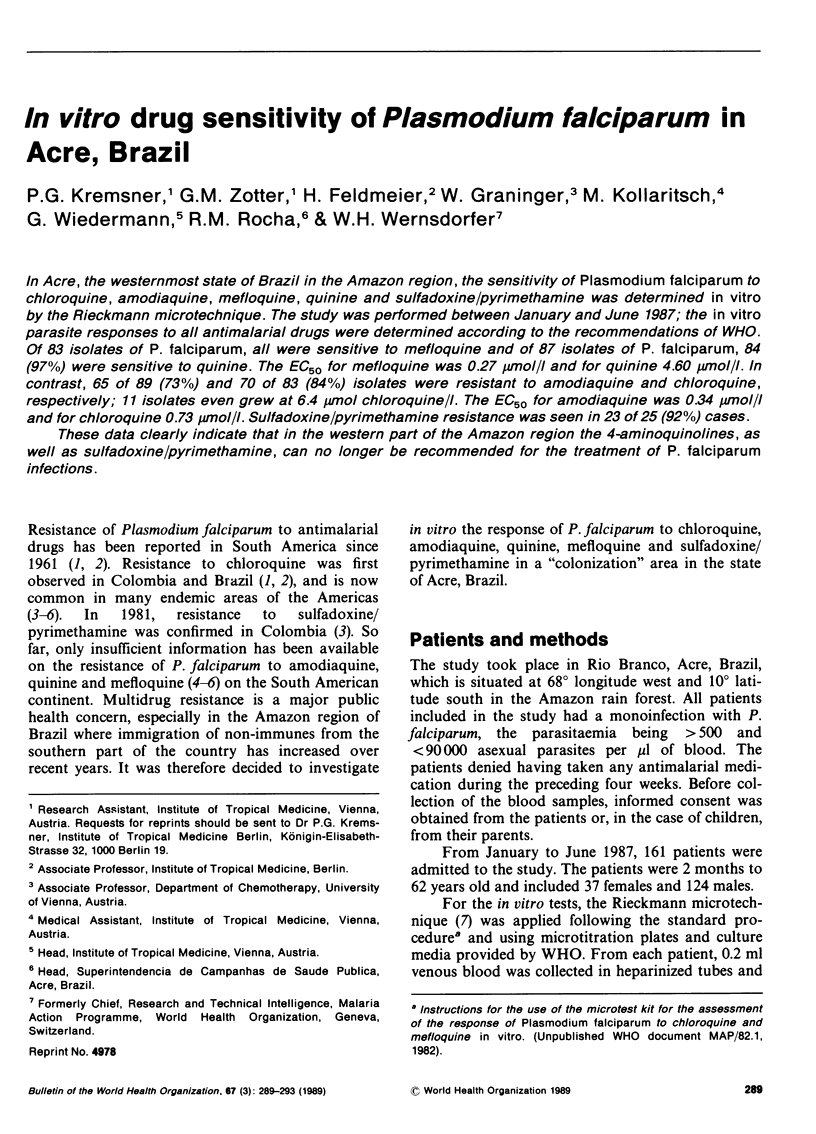
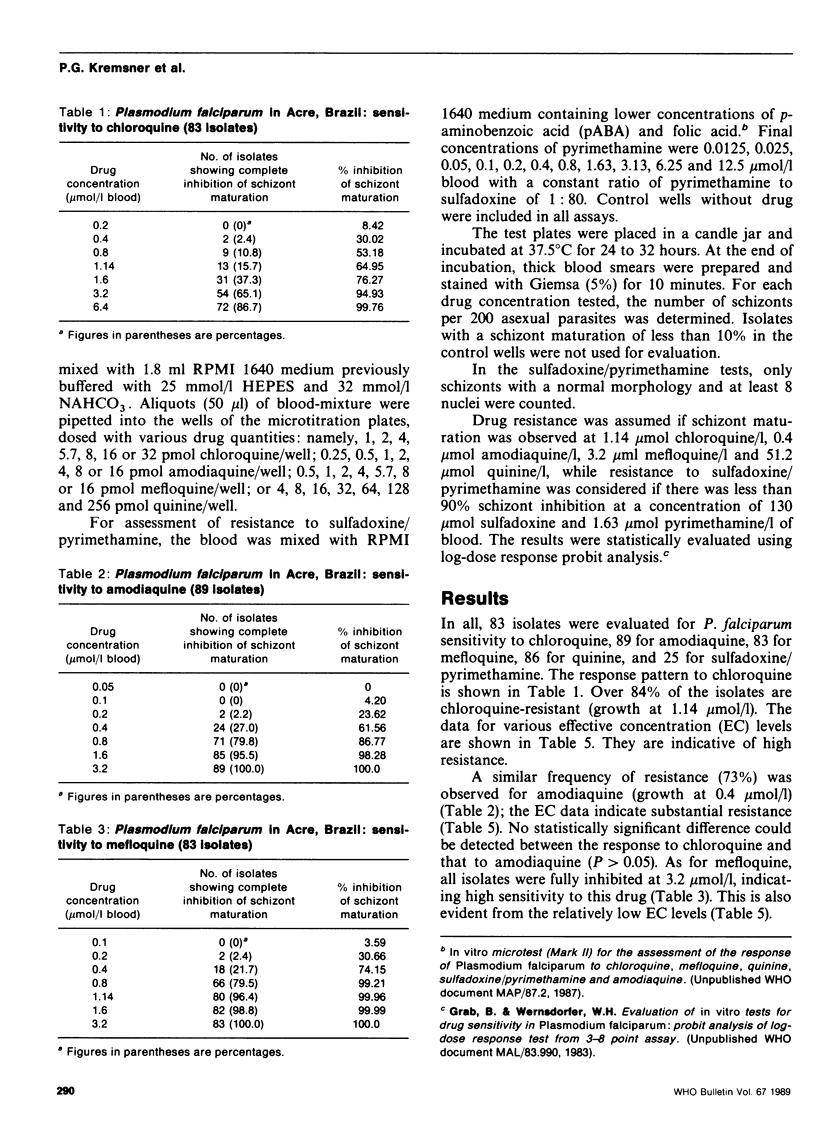
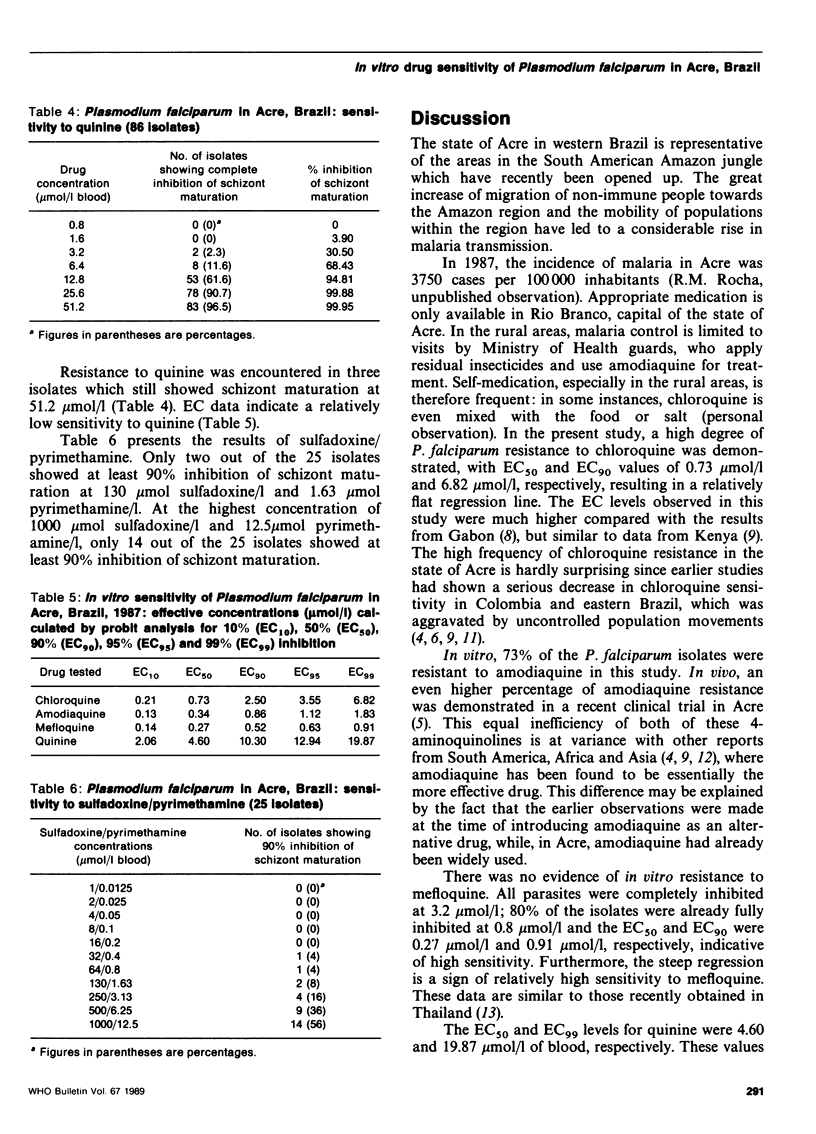
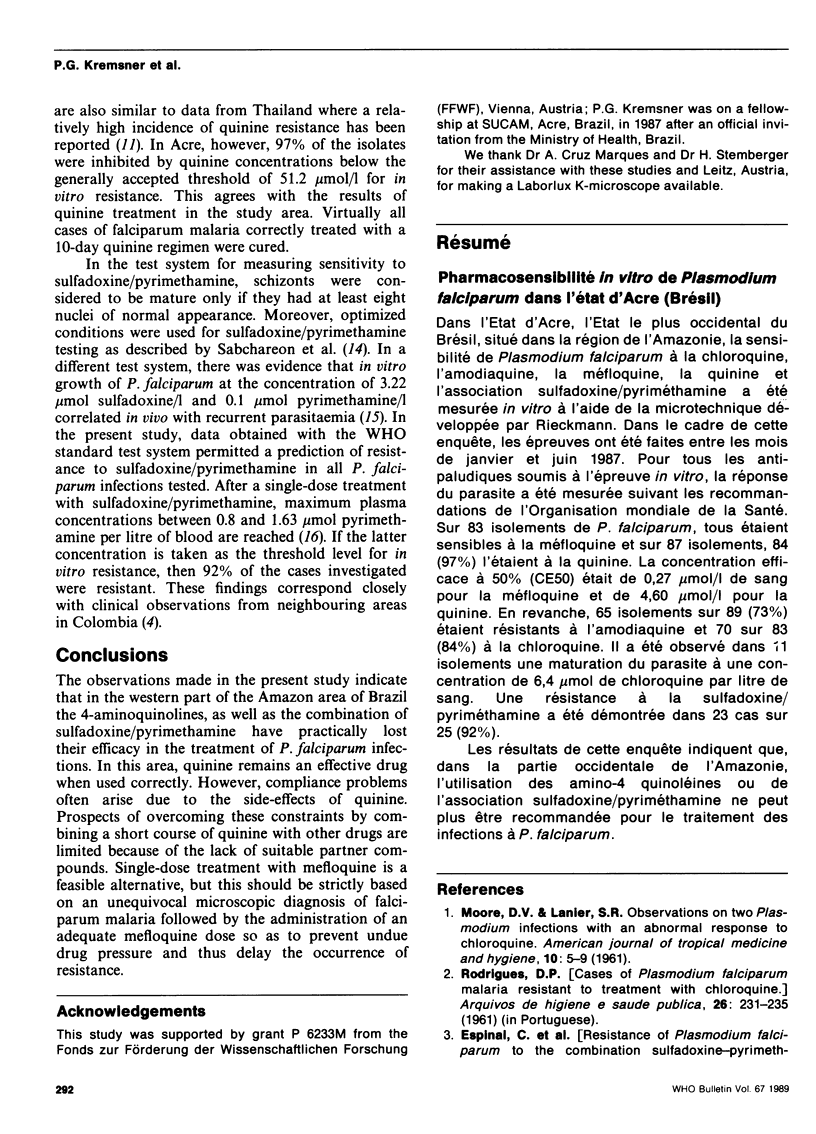
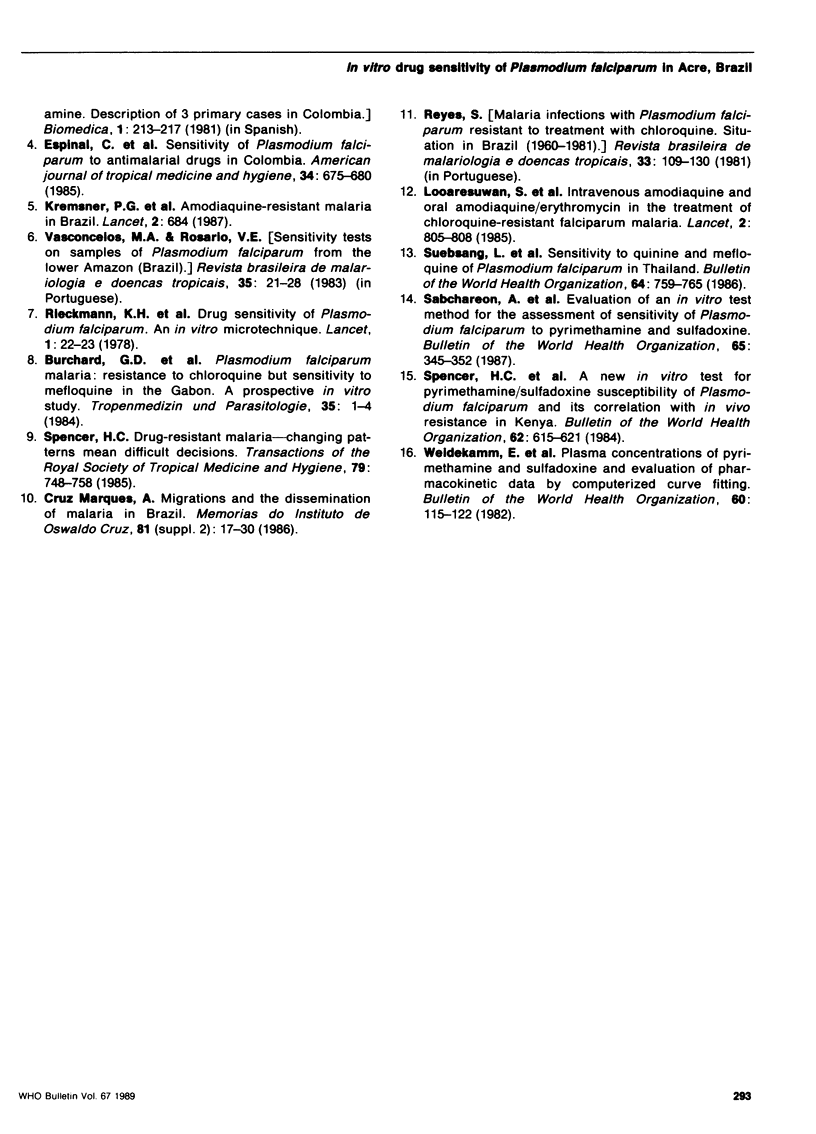
Selected References
These references are in PubMed. This may not be the complete list of references from this article.
- Espinal C. A., Cortes G. T., Guerra P., Arias A. E. Sensitivity of Plasmodium falciparum to antimalarial drugs in Colombia. Am J Trop Med Hyg. 1985 Jul;34(4):675–680. doi: 10.4269/ajtmh.1985.34.675. [DOI] [PubMed] [Google Scholar]
- Kremsner P. G., Zotter G. M., Grainger W., Feldmeier H. Amodiaquine-resistant malaria in Brazil. Lancet. 1987 Sep 19;2(8560):684–684. doi: 10.1016/s0140-6736(87)92465-2. [DOI] [PubMed] [Google Scholar]
- RODRIGUES D. C. [Cases of malaria caused by Plasmodium falciparum resistant to treatment with chloroquine]. Arq Hig Saude Publica. 1961 Sep;26:231–235. [PubMed] [Google Scholar]
- Reyes S. Infecçes maláricas por Plasmodium falciparum resistente ao tratamento com cloroquina. Situaço no Brasil (1960-1981). Rev Bras Malariol Doencas Trop. 1981;33:109–130. [PubMed] [Google Scholar]
- Spencer H. C. Drug-resistant malaria--changing patterns mean difficult decisions. Trans R Soc Trop Med Hyg. 1985;79(6):748–758. doi: 10.1016/0035-9203(85)90108-7. [DOI] [PubMed] [Google Scholar]
- Spencer H. C., Watkins W. M., Sixsmith D. G., Koech D. K., Chulay J. D. A new in vitro test for pyrimethamine/sulfadoxine susceptibility of Plasmodium falciparum and its correlation with in vivo resistance in Kenya. Bull World Health Organ. 1984;62(4):615–621. [PMC free article] [PubMed] [Google Scholar]
- Vasconcelos M. A., Rosário V. E. Testes de sensibilidade in vitro de amostras de Plasmodium falciparum da Bacia Amazônica (Brasil). Rev Bras Malariol Doencas Trop. 1983;35:21–28. [PubMed] [Google Scholar]


